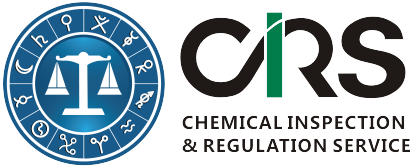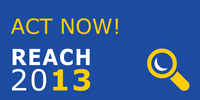
REACH SDS and eSDS
Safety data sheets (SDS) have been a well-accepted and effective method for the provision to downstream users of information on chemical substances and mixtures in the EU. Most buyers(either importers or distributors or downstream users) in EU will request a copy of SDS when they buy chemicals. Other countries such as USA have used Material Safety Data Sheets (MSDS), which is very similar to SDS in terms of format and contents.
The Annex II of EU Regulation (EC) No 1907/2006 (REACH) has mandated what information should and could be included in each section of the SDS. This annex II is ammended by the COMMISSION REGULATION (EU) No 453/2010 in May 2010. All SDS shall meet the latest requirements of REACH regulation.
For substances that are sold in quantities of more than 10 tonnes per year and are classified as dangerous, Exposure Scenarios describing how a substance can be safely handled to control exposures to both human health and the environment shall be appendixed to SDS, forming extended safety data sheets(eSDS). This new SDS/eSDS is known as"REACH SDS".
NEW!
14 Dec 2012, CIRS to hold a free webinar about GHS labelling for small containers & awkward packaging. For more information, please click here.
Do I need to supply REACH SDS and when?
You need to supply REACH SDS to your customers before or at time of the first delivery of chemical in paper or electronic format if your product is:
- substance or a mixture that is classified as hazardous, or PBT/vPvB or SVHC;
- a mixture that is not classified as dangerous, but contains a substance posing human health or environmental hazards with a concentration of >1%w/w for non-gaseous mixtures or 0.2%v/v for gas;
- a mixture that is not classified as dangerous, but contains a substance that is PBT, or vPvB, or SVHC in an individual concentration of ≥ 0.1 % by weight for mixtures that are solid or liquids (i.e., non-gaseous mixtures);
*persistent, bioaccumulative and toxic (PBT), or very persistent and very bioaccumulative (vPvB), substance of very high conern(SVHC).
Note 1: REACH SDS is not legally required for substance which is not classified as hazardous; However, it is a good practice for suppliers to provide SDSs for all chemical products.
Note 2: REACH SDS is not required for certain end-user products such as cosmetics;
Note 3: Where a customer re-orders substances or mixtures, then the supplier does not need to re-supply the SDS, unless the sheet’s contents have been updated.
What is new in REACH Safety Data Sheet (eSDS)?
The major changes of safety data sheets are outlined as below:
- Section 1: Identification of substance or mixture and company:
- Registration No. is required (when available);
- Identified uses of the substance/mixture is added;
- E-mail address of competent person is needed;
- Section 2: Hazards identification:
- Distinguish between mixtures that are and are not hazardous;
- Mention other hazards that do not result in classification (e.g., dustiness, ozone depletion);
- Classification as in Title V CLP and DSD(see note);
- Section 3: Composition & information on ingredients:
- All substances classified as hazardous or those with OELVs or PBT/vPvB need to be reported;
- Section 7: Handling and storage:
- Where CSR required, information to be consistent with Exposure Scenario (ES);
- Under "Handling" include measures to protect environment;
- New section on "Specific uses";
- Section 8: Exposure controls/personal protection (If CSR is required):
- DNELs and PNECs for substance shall be provided;
- Summary of Risk Management Measures(RMM) shall included for identified uses as set out in ES;
- Section 11, 12: Toxicological information and Ecological information:
- Summaries of toxic tests and ecological tests need to be provided;
- Section 15: Regulatory information:
- Indicate if CSA has been carried out;
- Indicate if substance subject to authorization/restriction;
- Section 16: Other information:
- Full text of R phrases (hazard statements) to be listed;
- Upon revision, indicate information added/deleted/revised;
Note 1: From 1 December 2010 until 1 June 2015, substance shall be classified in accordance with both 67/548/EEC(DSD) and CLP regulation.
Note 2: An example of REACH SDS prepared by CIRS can be found here.
When do I need to update my SDS into REACH SDS?
SDS shall be updated asap:
- once a REACH registration number is acquired;
- for hazardous substance from 1 Dec 2010;
- for hazardous mixture from 1 Dec 2015;
- when new hazard information or information that may affect the risk management measures becomes available;
- when a substance or mixture is classified according to the CLP Regulation;
- once an authorisation under REACH is granted or refused;
- once a restriction under REACH has been imposed.
How do I update REACH SDS after a REACH registration number is acquired?
- registration number shall be added;
- identified use(s) and uses advised against shall be added;
- exposure scenarios including any risk management measures shall be added when available; The information in the SDS should be consistent with the information in the chemical safety report (CSR) for that substance, or a mixture if a Chemical safety assessment(CSA) for the mixture is available;
- DNEL (derived no effect leval) and PNEC (predicted no effect concentration) shall be given when available;
Note: When a SDS is updated, the new dated version of the SDS, identified as ‘Revision: date’ shall be supplied to all customers.
What is extended Safety Data Sheets(eSDS) under REACH?
Exposure Scenarios (from Chemical Safety Report - one part of registration dossier) shall be annexed to SDS after REACH registration is completed. The updated SDS is called extended Safety Data Sheet or eSDS.
‘Exposure Scenario’ means the set of conditions, including operational conditions and risk management measures, that describe how the substance is manufactured or used during its life-cycle and how the manufacturer or importer controls, or recommends downstream users to control, exposures of humans and the environment.
Note 1: eSDS is only required for substances that are sold in quantities of more than 10 tonnes per year and are classified as hazardous.
Note 2: eSDS could reach hundreds of pages. When customers receive an eSDS, they will need to identify the relevant ES(s) for their own particular uses. If their uses are not covered, they will need to develop their own ESs.
Do I need to supply REACH SDS or eSDS in the official languages of member states?
Yes. You may either translate your English SDS into other languages of member states (for example, German, French, Spanish, Dutch, or Italian) or ask your customers to do the translation.
Can REACH SDS be directly used in countries like China, Korea and Japan?
No. The format and content of REACH SDS is similar to SDS in China, Korea and Japan because EU, China, Korea and Japan have all implemented GHS. The main purpose of GHS is to harmonize classification criteria and hazard communication tools (label and SDS) at national, regional and worldwide level. However, REACH SDS needs to be ajusted and translated before they can be used in China, Korea and Japan. For example, registration number, identified uses and exposure scenarions shall be removed. The SDS also needs to be translated into Chinese, Korean and Japanese.
More info about labelling and SDS requirements in China, Korea and Japan can be found here.
Our SDS and eSDS Services
To avoid penalties, companies shall ensure their SDS conform to the latest standards of REACH. ECHA has published detailed guidance on SDS preparation. However, it is much easier and less time-consuming for SMEs to outsource this job.
We have prepared over 500 SDS and over 100 eSDS according to REACH & CLP. It takes 2~5 working days to prepare a SDS or eSDS. All SDS are experts reviewed. No software. No hassle.
We also prepare GHS compliant SDSs for Asia Pacific region. For more information, please click the picture below:
We also offer MSDS review and translation service. We check the validity of data (for example, classification, toxicology data and right UN number) for your SDS for free.
Please note: We prepare our SDSs manually. Compared to other translation service providers, our price is very competitive and our knowledge with REACH and CLP allows us to translate your SDS more professionally because we will use standard phrases.
Contact
- Europe Office
Unit 1 Ardee Business Park, Hale Street, Ardee, Co. Louth, Ireland
Tel : +353 41 9806 916 | Fax : +353 41 9806 999
Email: service@cirs-reach.com
Downloads
- REACH SDS and eSDS Service[pdf,300KB]
- Application Form for C&L Notification, Label and SDS[Doc,131KB]
- CIRS's Sample SDS for PENTANE-2,4-DIONE [pdf,126KB]
- ECHA Guidance on Safety Data Sheet[pdf,1.23MB]
- Recommended REACH SDS Template[pdf,497KB]
- Understanding Cut-off Value and Concentration Limits in CLP Regulation[pdf, 500KB]
- Common REACH Offences Relating to SDS[pdf,332KB]
- Common REACH Penalties Relating to SDS[pdf,253KB]



_will_be_held_in_Shanghai.jpg)